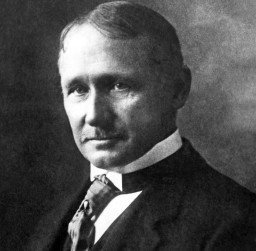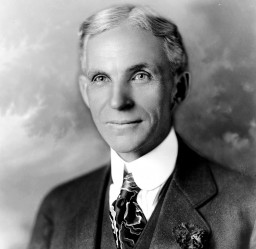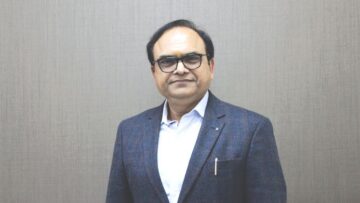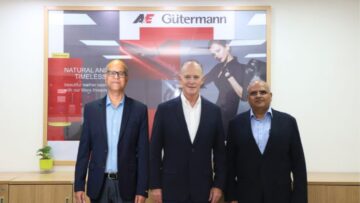Ever since the advent of civilization, man has always attempted to develop upon his methods, processes and tools to improve the productivity of his resources by eliminating waste in order to maximize his earnings and enhance his living standards. This continued pursuit for higher productivity, gave birth to Industrial Engineering. Hugo Diemar coined the term Industrial Engineering in 1900 to describe the fusion of engineering and business disciplines and established world’s first Industrial Engineering Department in Pennsylvania State University in 1909. Industrial Engineering is concerned with the design, improvement and installation of integrated system of men, material and machines for the benefit of mankind. It draws upon specialized knowledge and skills in the mathematical and physical sciences together with the principles and methods of engineering analysis and design to specify, predict and evaluate the results to be obtained from such systems. In this new series of articles, Dr. Prabir Jana, Professor, NIFT Delhi along with Team Apparel Online and industry experts would discuss topics of their speciality and explain different activities that IE does in apparel manufacturing, the tools/techniques used for completing the activities and actual case examples.

The basic objectives of Industrial Engineering are to improve operating methods and control costs, as also reducing these costs through cost reduction programmes. The basic activities of Industrial Engineering in context of apparel manufacturing can be listed as:
• Method improvement; sewing operator’s right and left hand sequential movements are analyzed through Method Study and converted into parallel/overlapping movement to reduce time.
• Unavoidable allowances like personal, fatigue, etc., and avoidable allowances like machine breakdown, waiting for pieces, etc. are estimated through work sampling.
• Evaluate rating of operators by levelling/Westinghouse/synthetic method.
• Develop work content of any operation in terms of standard allowed minutes by Time Study and incorporating unavoidable allowances.
• Operation breakdown of a garment to determine sequence, stitch type and seam type of every operation and prepare operation flow chart.
• Selection of machine bed type and feed type, attachment and work aids for every operation.
• Design and fabrication of attachment and work aids for any operation/process, if required.
• Selection of appropriate needle type, needle size, threads count and thread consumption for each garment.
• Calculation of machine and manpower requirement based on target, or calculation of achievable target based on available machine and manpower keeping in mind the constraints like absenteeism, average rating of workers and line utilization.
• Planning of machine layout for maximizing unidirectional material movement (minimizing criss-cross material movement). Optimum handling and storage of cut parts, half-finished parts and complete garment for easy retrieval.
• Management of Work in Process (WIP) in sewing line to maximize production, balance efficiency, and operator utilization through line balancing technique.
• Style changeover planning to minimize start-up loss.
• Maintaining workplace health and safety through ergonomic vulnerability assessment and safety audit.
• Identify and specify use of Personal Protective Equipment (PPE) like mask for overlock operator, wire mesh gloves for band knife operator, needle guard for sewing machines.
The development of techniques like Critical Path Method (CPM) and Program Evaluation & Review Technique (PERT), value engineering, human factor engineering, statistical and mathematical tools have expanded the scope of Industrial Engineering. Computer applications in Industrial Engineering have also added a new dimension to the IE functions. Apart from above activities, there are several other activities which are supposed to be the responsibilities of HR, quality and planning executives, but often comes under IE umbrella. They are:
• Development and implementation of job evaluation system for operators and supervisory level workers.
• Development and implementation of wage incentive schemes for operators and supervisory level workers.
• Statistical analysis and techniques like SPC, SQC, Six Sigma for product and process quality assessment and improvement.
• Implementation of Lean tools like 5S, Value Stream Mapping (VSM), etc.
• Scheduling and controlling of cutting, sewing and finishing through PERT, CPM and Gantt chart.
The above list of ever-conceivable activities on one hand exemplifies the importance of IE in an organization, and on the other hand probably makes us think if all these activities are to be done by industrial engineers, then what the other guys in manufacturing are supposed to do? The true power of Industrial Engineering technique in manufacturing industry may be evident from the fact that early industrialist countries like the US has increased its per capita manufacturing output by more than three times during last 60 years.
It is true that Indian apparel industry (automobile and engineering goods are exception) is a late adopter of Industrial Engineering technique in its factories. Although with peer experience and buyers’ pressure, lot of organizations started Industrial Engineering practices by setting up IE departments. However, it is also an open secret that the IE department is often considered too theoretical by production department and reduced to mere formality (showpiece) by the management.
Apparel Online has in past carried many intriguing articles on Industrial Engineering and its benefits for apparel manufacturing industry. In an ode to the industrial engineers working in the industry and to clear the doubts over its usefulness in apparel industry, the magazine plans to carry a series of articles on IE, explaining each and every activity that it executes and the tools and techniques that are used giving examples/cases of application.










